Niio Select Artists
Curated Catalog #1
Explore and Experience New Media Art
Niio connects with our digital culture by enabling and stimulating the market for video and new media art. Our curated distribution platform empowers a global network of leading artists, galleries, libraries and institutions to self-publish media art forms which can be borrowed or acquired and then viewed on connected display devices anywhere in the world.
Contact Art Advisor
REFIK ANADOL
Melting Memories - Engram - A
Refik Anadol’s latest project on the materiality of remembering. Melting Memories offered new insights into the representational possibilities emerging from the intersection of advanced technology and contemporary art. By showcasing several interdisciplinary projects that translate the elusive process of memory retrieval into data collections, the exhibition immersed visitors in Anadol’s creative vision of “recollection.” “Science states meanings; art expresses them,” writes American philosopher John Dewey and draws a curious distinction between what he sees as the principal modes of communication in both disciplines. In Melting Memories, Refik Anadol’s expressive statements provide the viewer with revealing and contemplative artworks that will generate responses to Dewey’s thesis. Comprising data paintings, augmented data sculptures and light projections, the project as a whole debuts new advances in technology that enable visitors to experience aesthetic interpretations of motor movements inside a human brain. Each work grows out of the artist’s impressive experiments with the advanced technology tools provided by the Neuroscape Laboratory at the University of California, San Francisco. Neuroscape is a neuroscience center focusing on technology creation and scientific research on brain function of both healthy and impaired individuals.
REFIK ANADOL
Melting Memories - Engram - B
Refik Anadol’s latest project on the materiality of remembering. Melting Memories offered new insights into the representational possibilities emerging from the intersection of advanced technology and contemporary art. By showcasing several interdisciplinary projects that translate the elusive process of memory retrieval into data collections, the exhibition immersed visitors in Anadol’s creative vision of “recollection.” “Science states meanings; art expresses them,” writes American philosopher John Dewey and draws a curious distinction between what he sees as the principal modes of communication in both disciplines. In Melting Memories, Refik Anadol’s expressive statements provide the viewer with revealing and contemplative artworks that will generate responses to Dewey’s thesis. Comprising data paintings, augmented data sculptures and light projections, the project as a whole debuts new advances in technology that enable visitors to experience aesthetic interpretations of motor movements inside a human brain. Each work grows out of the artist’s impressive experiments with the advanced technology tools provided by the Neuroscape Laboratory at the University of California, San Francisco. Neuroscape is a neuroscience center focusing on technology creation and scientific research on brain function of both healthy and impaired individuals.
Refik Anadol
Black Sea
“Black Sea” is a kinetic data sculpture that explores the organic interaction between representation and reflection. Using high frequency radar collections provided by Turkish State Meteorological Service of the Black Sea, this piece aims to highlight the symbiotic interplay of technology, art, and nature in relation to humanity’s quest to push the limits of possibility. Our modes of representation and inquiry become a part of our natural world, reflecting and augmenting our perceptions of reality. In our quest for resolution, stories offer us a simulated environment that are in fact just as real as nature itself. The transformation of this sea surface data collection becomes then not just a means of visualizing information, but rather a transmutation of our desire for understanding into a poetic experience.
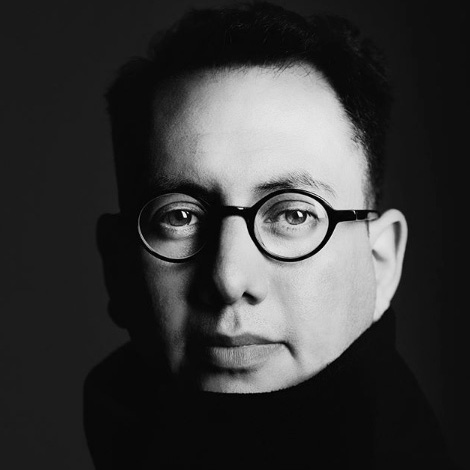
REFIK ANADOL
Artist
Refik Anadol (b. 1985, Istanbul, Turkey) is a media artist and director. He currently resides in Los Angeles, California, where he owns and operates Refik Anadol Studio. Anadol is also a lecturer and researcher for UCLA’s Department of Design Media Arts from which he obtained his Master of Fine Arts. Anadol’s body of work addresses the challenges, and the possibilities, that ubiquitous computing has imposed on human kind, and what it means to be a human in the age of machine intelligence. He explores how the perception and experience of time and space are radically changing now that machines dominate our everyday lives. As a spatial thinker, Anadol is intrigued by the ways in which the digital age and machine intelligence allow for a new aesthetic technique to create enriched immersive environments that offer a dynamic perception of space. By proposing the possibility of “post-digital architecture,” Anadol invites his audience to imagine alternative realities by re-defining the functionalities of both interior and exterior architectural elements. Anadol tackles this by not simply integrating media into built forms, but by translating the logic of a new media technology into spatial design. Residing at the crossroads of art, science, and technology, Anadol’s site-specific parametric data sculptures, live audio/visual performances, and immersive installations take many virtual and physical forms. Entire buildings come to life, floors, walls, and ceilings disappear into infinity, breathtaking aesthetics take shape from large swaths of data, and what was once invisible to the human eye becomes visible, offering the audience a new perspective on, and narrative of their worlds. The primary thread that runs throughout Anadol’s groundbreaking visualizations of the unseen world is data: for WDCH Dreams, Anadol accessed 100 years of the Los Angeles Philharmonic’s digital archives; for Oakland’s Sense of Place, real-time environmental data informs the work; and for Charlotte Airport’s Interconnected, he utilizes real-time airport statistics. Refik Anadol Studio employs a unique team of prominent computer scientists, software developers, architects, engineers, and designers to realize Anadol’s vision. A pioneer in his field, Anadol has partnered with teams at Microsoft, Google (Artist and Machine Intelligence), Nvidia, JPL/NASA, Intel, IBM, Siemens and Epson, to apply the latest, cutting-edge science and technologies to his work. Refik Anadol is the recipient of a number of awards and prizes including the Lorenzo il Magnifico Lifetime Achievement Award for New Media Art, Microsoft Research’s Best Vision Award, German Design Award, UCLA Art+Architecture Moss Award, University of California Institute for Research in the Arts Award, SEGD Global Design Awards, and Google’s Art and Machine Intelligence Artist Residency Award. Anadol’s site-specific audio/visual performances have been featured at iconic landmarks, museums and festivals worldwide, such as Walt Disney Concert Hall, Hammer Museum, International Digital Arts Biennial Montreal, Ars Electronica Festival , l’Usine | Genève, Arc De Triomf, Zollverein | SANAA’s School of Design Building, santralistanbul Contemporary Art Center, Outdoor Vision Festival, Istanbul Design Biennial, Sydney City Art, and Lichtrouten, among many others.
ZEITGUISED
geist.xyz
geist.xyz is a different kind of fashion project: what looks at first glance as an eccentric tangle of simulated dance and a color coordinated tumblr exploration turns out to be a study of handcrafted algorithmic textiles and procedural surfaces. A synthetic ghost shifts simulated textiles from passive matter to live organisms. They behave like apparitions in an artificial choreography, with movements that are imaginary yet familiar. Like a constant metamorphosis, the same sequence gets transformed over and over again. At each step, all aspects of the designs are modified, from algorithmic pattern to color scheme to fabric behaviour. The results are meandering layers of style changes. A linear montage shows the intricate details. Shuffled layers of metronomic sounds emphasize the transformation fluctuating in and out of sync. The grid of moving images on geist.xyz visualizes our conceptual approach and color scheme. Outtakes on instagram.com/zeitguised All conceptual, design and production work: ZEITGUISED. Sound track: “geist.xyz” by Superimposed Void (http://bit.ly/svgeist)
ZEITGUISED
Flotsam & Jetsam: Monobloc
“Flotsam & Jetsam: Monobloc” treats the ubiquitous plastic chair as a contemporary design classic. In this film we show an enormous hovering cloud of iconic chairs that behave like flotsam and jetsam in breaking waves/ the surf. Poetry as a kind of algorithmic perpetuum mobile. The everyday, casual form of the Monobloc is pitted as a stark contrast in this film against those of the designer und architects’ chairs. Present in larger numbers in the frame, it shows the audacity to have gained a place in the world of exceptional design by mere universal distribution.
ZEITGUISED
ZEITGUISED x KVADRAT: emancipath
Resolution: 4k UHD Length: 0.54min Year: 2017 Commissioned by: Kvadrat Concept: ZEITGUISED Art Direction: ZEITGUISED Design: ZEITGUISED Animation: ZEITGUISED Production: ZEITGUISED Sound: Superimposed Void
ZEITGUISED x Kvadrat Physical and digital space poetically intersect in the latest work by ZEITGUISED, commissioned by sublime textile design house Kvadrat. The film, or rather set of moving sculptures, plays with the possibility of metamorphous shapes as a physical reality. Commonly passive textiles and upholstery are shown here with life-like behaviour as if they possessed a sovereign spirit. Seamlessly smooth transformations of organic and geometric forms are constantly working towards striking abstract compositions, and each fabric has its own character. At the beginning of the looping sequence of shots, the current edition of Kvadrat fabric see- mingly oozes independently across solid flat geometries as if it were growing endlessly from within itself. Over the course of the following shots the forms start to bulge and become auto- nomous expanding volumes, first in their formal language and later literally as floating shapes themselves. Peaceful and patient in pace and behaviour, the arresting physical impossibility of this pro- cess is softly tickled by the realism and detail of fabric texture in the vivid lighting. To glance at these volutes is to touch them, to feel their tactility with your eyes.
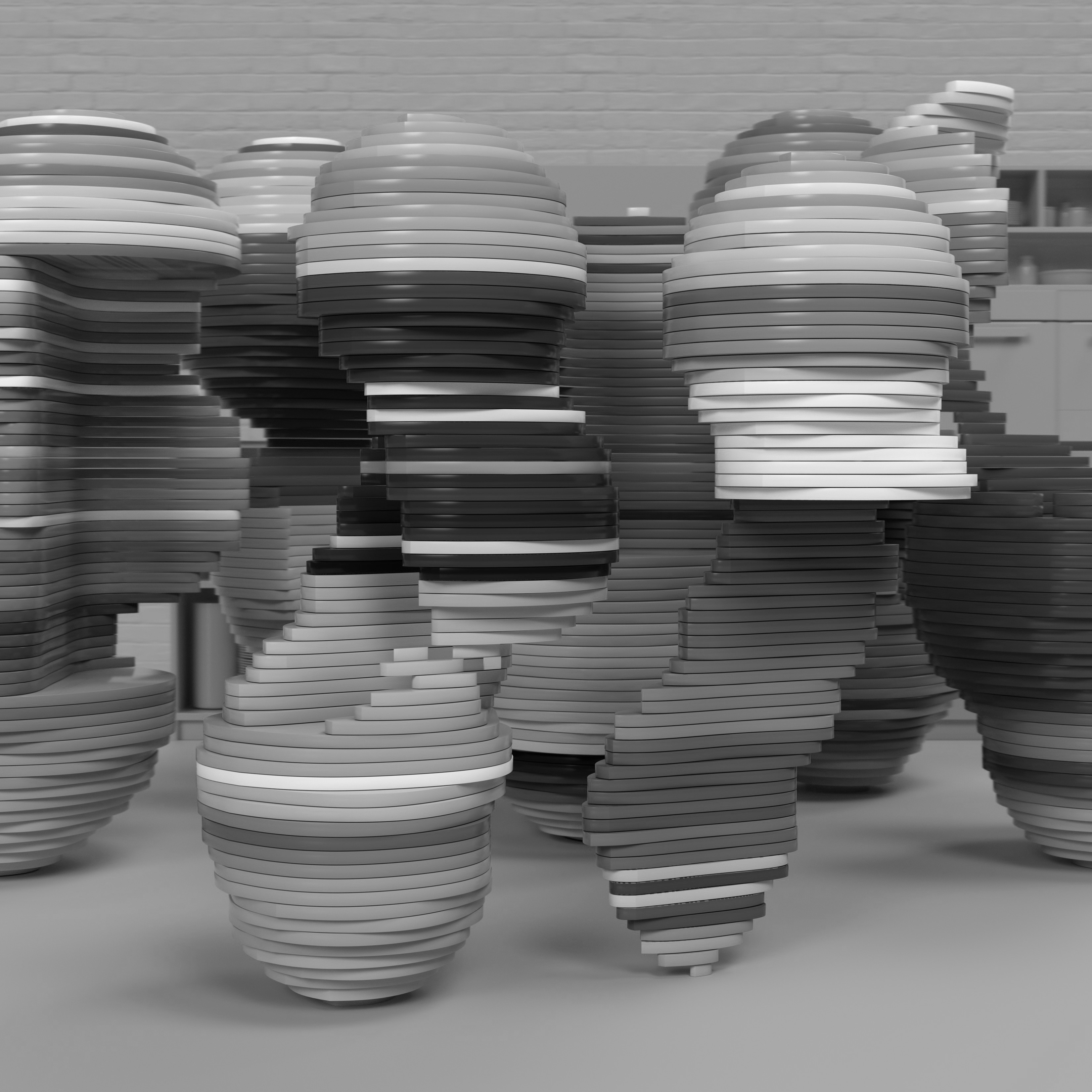
Zeitguised
Art Studio
Zeitguised are a studio for contemporary visual art exploring the frontier zone between digital abstraction and representation. Using hyperreal cinematic simulations, Zeitguised creates post-narrative modes of seductive structural transformations. By evoking mental states of manic order and complex instability, “fake” is emancipated from an obsession with “authenticity”. Zeitguised was founded in 2001 by Henrik Mauler and Jamie Raap.
Quayola
Strata #1
The term “strata” refers to a geological formation constructed of multiple layers of rock, where each layer is differentiated from the next through its characteristics: porosity, texture, color, and composition. It defines a manner of identifying breaks within organic evolution, a visual metaphor for a history composed not as a linear process but one of accumulation of signifiers over time. It is in this vein that the “Strata” series explores the construction and deconstruction of our perception of classical art, architecture and iconography. Operating within the landscape of classical aesthetics–the perfection found in the figuration of the Renaissance, the opulence of the Baroque, or the rigour and integrity of Gothic architecture –“Strata” delves under the surface of the image, deconstructing it, reducing it to it’s essential coordinates, colors, geometries, and strips it of its symbolic function. A living abstract landscape emerges, complete with topographic maps, linear pathways and structures which pulsate, diverge from the origin, scatter, and hang suspended.
Quayola
Jardins d’Été #1
Jardins d’Été by Quayola pays homage to the tradition of french impressionism and the late works of Claude Monet.The second iteration of this series of artworks investigates the ways in which nature is observed, studied and synthesized, becoming a point of departure towards abstraction. Quayola recreated similar conditions to the classical impressionist landscape paintings, however he engaged with an extensive technological apparatus to capture the sensitive nuances of reality beyond our senses. Here natural landscapes are observed and analysed through the eye of the machine, and re-purposed through new modes of visual synthesis. Jardins d’Été consists of a series of 4K resolution digital video paintings inspired by the gardens of Chateau de Chaumont-sur-Loire. A wide range of floral compositions manipulated by high winds are filmed at night in ultra-high definition. Quayola edits the acquired videos with complex computational analysis of motion, composition and colour schemes which become the foundation for the creation of new algorithmic paintings.
Quayola
Camouflage #A1
Camouflage a series of algorithmic paintings by Quayola. Camouflage investigates the ways in which nature is observed and synthesized by machines. Employing custom computer software, natural landscapes are analysed and manipulated to become new abstract formations.
Quayola
Strata #4
Strata #4, 2011 HD video, stereo sound 10:09 loop Edition of 6.
Strata #4 was originally commissioned as a multi-channel immersive video-installation for the Palais de Beaux Arts in Lille, France, where it debuted in October 2011. The subjects of this work are four grand altarpieces by Anton Van Dyke and Peter Paul Ruebens in the museum’s Flemish collection: Van Dyck’s Christ on the Cross (1628) and Rubens’ Martyrdom of St. Catherine (1615), The Ecstasy of Mary Magdalene (1619) and The Descent from the Cross (1617). “Strata #4 is a study of the relationship between classical figuration and abstraction,” says Quayola. “It is based on universal rules of beauty and perfection. The movement on-screen creates a dialog between two eras, two dimensions.”
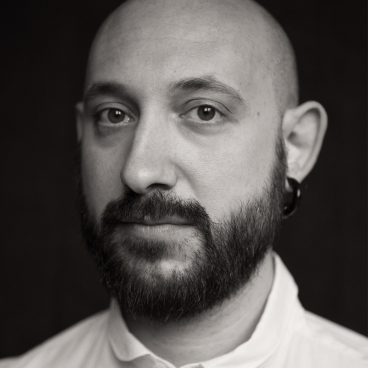
Quayola
Artist
Quayola employs technology as a lens to explore the tensions and equilibriums between seemingly opposing forces: the real and artificial, figurative and abstract, old and new. Constructing immersive installations, often at historically significant architectural sites, he engages with and reimagines canonical imagery through contemporary technology. Hellenistic sculpture, Old Master painting, and Baroque architecture are some of the historical aesthetics that serve as a point of departure for Quayola’s abstract compositions. His varied practice, all deriving from custom computer software, also includes audiovisual performance, video, sculpture, and works on paper.
Casey REAS
Transference
Transference explores personal identity and the mutability of the self. The raw materials are all of the frames in Ingmar Bergman’s 1966 film Persona that contain a face, imperfectly extracted by a computer-vision system. Each frame is distorted through a loss of information to obscure the distinct identity of each face — to compress and flatten individuality.
Casey REAS
Bibliography
Bibliography is a simulated information archive, specifically the transfer of information from printed to software formats. It scans through the set of books from the artist’s personal collection that have been fundamental to shaping his understanding of the history and theory of information, media arts, and how culture and technology intersect.
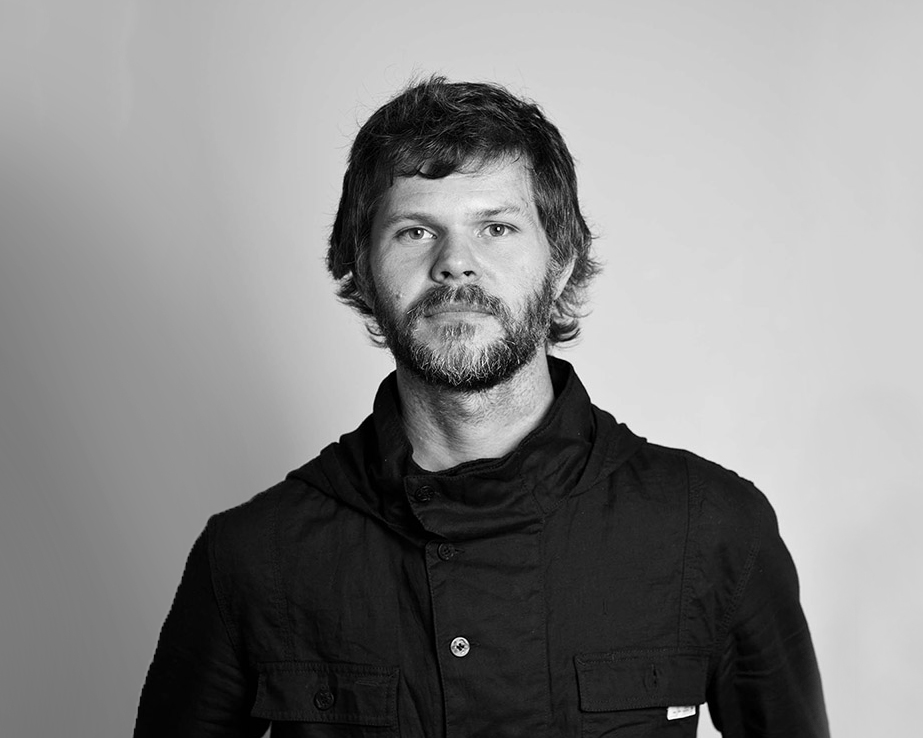
Casey REAS
Artist
Casey Reas is an artist and educator who lives in Los Angeles. His software, videos, installations, and prints, have been featured in numerous solo and group exhibitions at museums and galleries in the United States, Europe, and Asia. His work varies from small works on paper to building-scale software installations and he balances solo work in the studio with collaborations with architects and musicians. Reas is a professor at the University of California, Los Angeles. He holds a masters degree from the Massachusetts Institute of Technology in Media Arts and Sciences as well as a bachelors degree from the College of Design, Architecture, Art, and Planning at the University of Cincinnati. With Ben Fry, Reas initiated Processing in 2001.
Levi van Veluw
Spheres
The newest instalment in “The Collapse of Cohesion” is a series of short films, based on drawings. One of the drawings presents an image of an archive room, filled with large structures of cabinets containing more than 1500 neatly arranged icosahedrons. The whole arrangement is held in place by the very structure of the cabinets and the force of gravity, in a fundamental and continuous on-going struggle between the desire for order and the forces of nature. An unknown cause upsets this equilibrium and the cabinets are made to topple over. The symmetrical forms are no longer held in place, gravity takes over, order is turned into chaos. In the film, the drawing has been replicated life-size in wood scale 1 to 1. All the visible surfaces are covered in carbon powder, and the setting acquires shape only through the reflection of the light. Reality becomes tangible only through the experience of lighter or darker hues, as in a drawing. The falling apart of the structure is filmed at over 1000 frames per second. After months of meticulous preparation, this is the only, and crucial, moment over which the artist has no control. In contrast to the drawing in which the moment of chaos remains an interpretation by the artist – and is therefore inexorably linked to him – the film makes it possible to relinquish all and every form of control.
Levi van Veluw
family 2012
Depicted in “Family” is a room with 5 persons sitting at a table. These persons are Levi van Veluw and the members of his immediate family: his father, mother, brother and sister. As in certain earlier works, everything, including the whole interior space as well as all family members, is covered with thousands of dark brown wooden blocks. At first sight, everyone seems to be sitting peacefully at the table, the picture of a perfect family unit. Yet this group of figures is positioned in an abstract environment, unrecognisable and therefore far removed from reality. The awkward silence, dark colours and claustrophobic atmosphere suggest uncomfortable underlying tensions and emotions. The endless repetition of wooden blocks again stands for Van Veluw’s attempts to gain control over his immediate environment, in this case his own position within the family structure.
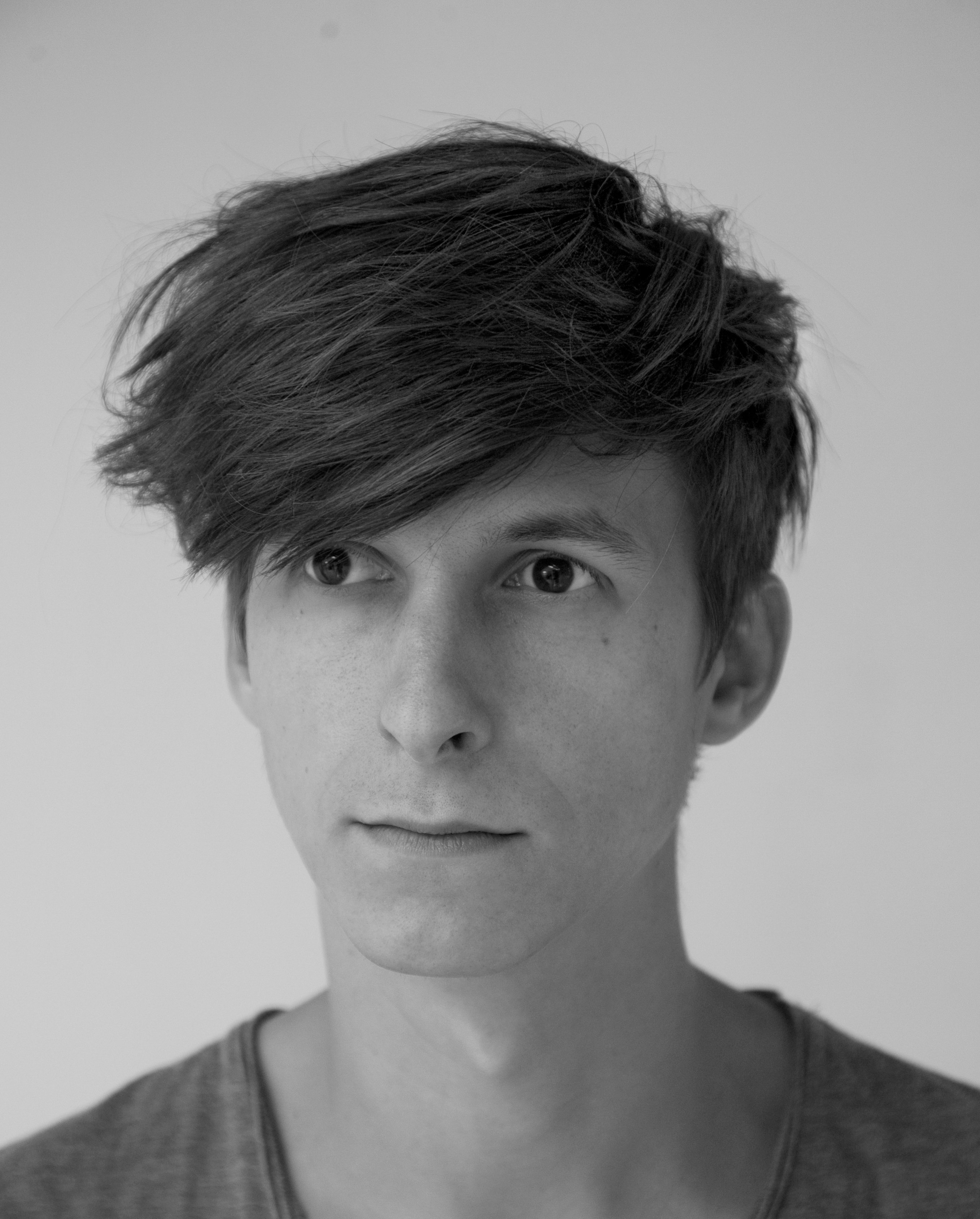
Levi van Veluw
Artist
Produces multi-disciplinary works that include photographs, videos, sculptures, installations and drawings. His layered multi-disciplinary pieces of sublime design, modernist architecture and disruptive environments possess a strange, unreal beauty with no perception of time, space and reality. Many of his works feature a combination of grids and geometric forms, which explore the idea of a deep immeasurable space. Van Veluw’s varied body of work has been show- cased in many locations, earning him a number of nominations and awards. His works were shown at Museum of Arts and Design (New York), Marres House for Contemporary Culture (Maastricht), Manifesta Foundation (Amsterdam), Maison Particulière (Brussels), De Hallen (Haarlem), Domaine the Kerguehennec (France), Museum of Image and Sound (São Paulo), The Museum of Old and New Art (Berriedale), The Phillips Collection (Washington DC) and The Bass Museum of Art (Miami).